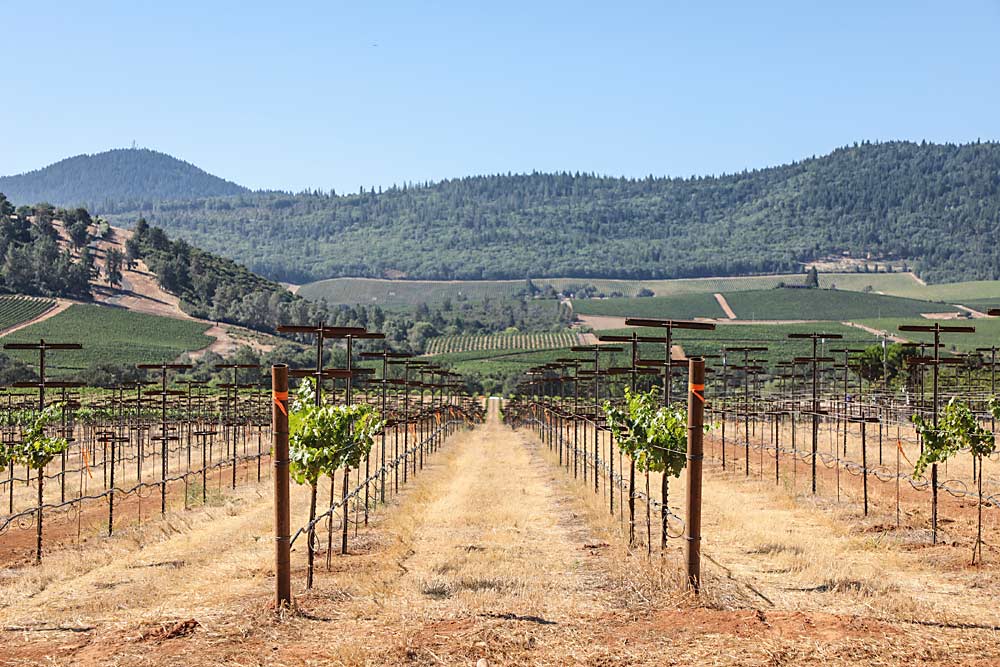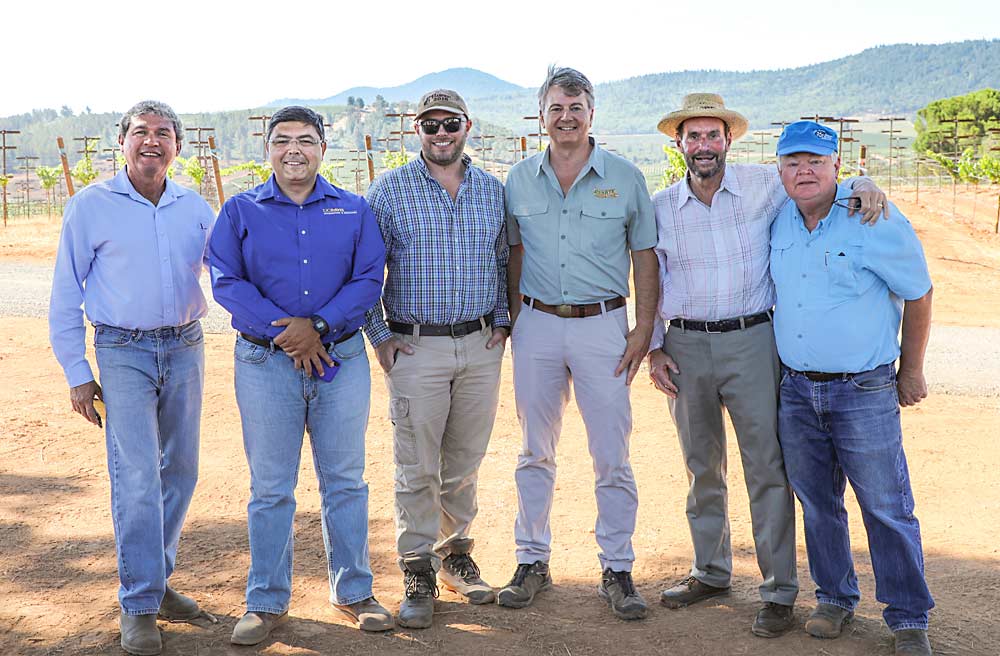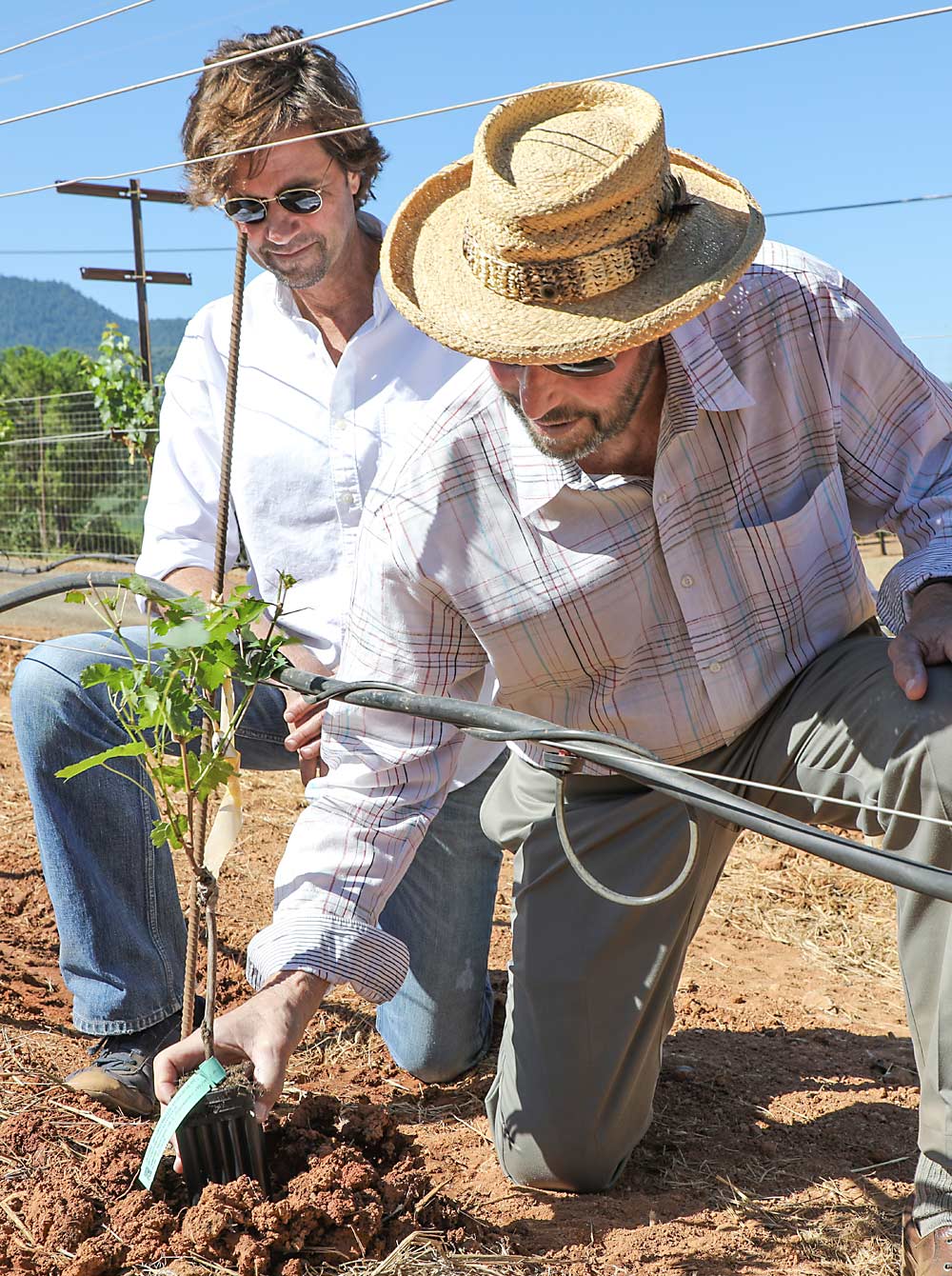
A huge Cabernet trial is underway in California, encompassing 100 clone/rootstock combinations and covering 3.5 acres. Researchers designed it to help identify genetic variations that impart a greater resilience to climate change — notably, improved drought tolerance that will enable more effective and sustainable water-use practices while also producing high-quality fruit and wine.
“I’ve heard it called the ‘mother of all Cabernet trials’ and it has earned the title for a reason,” said Clint Nelson, director of vineyard operations at Beckstoffer Vineyards — Red Hills, which hosts the University of California, Davis-led trial at its Amber Knolls ranch in Lake County. “I believe this is the largest and most replicated project of its kind. To put it in perspective, a typical research project will have anywhere from 200 to 300 data vines for collection. This project will have 3,600 data vines and data points.”
The idea began with Beckstoffer Vineyards, which was preparing to plant more acres with Cabernet. Instead of mounting a small observational study, Nelson approached S. Kaan Kurtural, cooperative extension specialist in viticulture at the University of California, Davis, about putting together a larger trial that would produce some statistically significant numbers.
“We are 97 percent Cabernet Sauvignon, so why not see what materials out there produce the best quality and have the best plant health and plant suitability in the long term?” Nelson said. “He took it much farther than what I was expecting with the 10 clones and 10 rootstocks, but that’s kind of Kaan’s M.O. He does not shy away from challenging questions.”

Over the next eight seasons, the trial will evaluate both novel and heritage clonal materials in combination with some of the most technologically advanced rootstocks available, Nelson said. The selection of tried-and-true clones and rootstocks will be included to give the trial relevance to previous studies. Details about the innovative clones and rootstocks in the trial are currently under wraps, but he mentioned that some of the selected new clonal materials are noted for their wine flavors, and two of the rootstocks are recent USDA releases.
Duarte Nursery prepared approximately 3,600 vines with the chosen combinations of clones and rootstocks and donated them for the trial, which was planted in August. Beckstoffer Vineyards will tend the vines for the duration of the trial and track such parameters as vine health and capacity. Kurtural and his research group will head up a full range of data collection and analysis on everything from plant physiology to productivity and quality and, in addition, will lead the eventual production and evaluation of wine. Kurtural is currently seeking funding to support his group’s work. In addition, the Lake County Winegrape Commission is assisting with the promotion of the trial.
Planting to adapt
With its large scale, the trial “attempts to assess both plant fitness and wine grape quality as weather events become more sporadic and extreme,” Nelson said. Climate change extends beyond warming and drought to increased frost events, colder spring and fall seasons, and greater frequency of hailstorms. He said this study will help Cabernet growers in the North Coast AVA, and also across the industry.
The Cabernet trial comes at a time when growers are struggling, according to Alexander Levin, viticulturist and assistant professor at Oregon State University, who is not involved in this project.
“Take one look at any nursery’s cultivar selection list, and then go and try to find published field data on all those clones. Spoiler alert: You won’t find much,” he said. “Most of what people plant is simply word-of-mouth recommendations or what their neighbors are doing. That doesn’t help much, and everyone ends up growing the same thing and having the same problems.”
Although he hasn’t delved too deeply into the new Cabernet trial, he described it as “large and complex, but comprehensive,” and agrees such trials are needed. “There is a lot of untested plant material out there that needs to be tested under field conditions,” he said.
Kurtural also hopes the trial will provide growers some clarity on drought tolerance, as Beckstoffer plans to irrigate at 70 percent of plant-water demand.

“Right now, I would say that we are in a clone hell: There are more clones than we can shake a stick at, and people are at a loss in terms of what to do,” he said. “And as far as rootstocks go, they have not been properly evaluated for their climate potential, meaning that we do not know how they will do in severe droughts or (with) limited amounts of water applications and so forth, because everything is irrigated in Southern California, and we always test them under ideal conditions.”
Kurtural also plans to consider how well the combinations accommodate increasingly mechanized management. In addition, he sees the trial as providing an opportunity for graduate students to build skills that will benefit vineyards in the years to come. “We’re lacking applied scientists that are going into our industry right now, so that will be one of the major outcomes of this work: to train technical people to work in our vineyards,” he said.
Nelson anticipates a wide range of useful findings not only for California growers, who can make direct correlations with the study outcomes, but also for growers in other parts of the country and world.
“The combination of clone and rootstock for that synergistic effect should translate to other growing regions, as long as they are working in drought-prone areas,” he said. “We feel like we’re developing a handbook for Cabernet growers for the next couple of decades, as climates become more variable.”
—by Leslie Mertz
Leslie Mertz is a freelance writer based in Gaylord, Michigan.






Leave A Comment